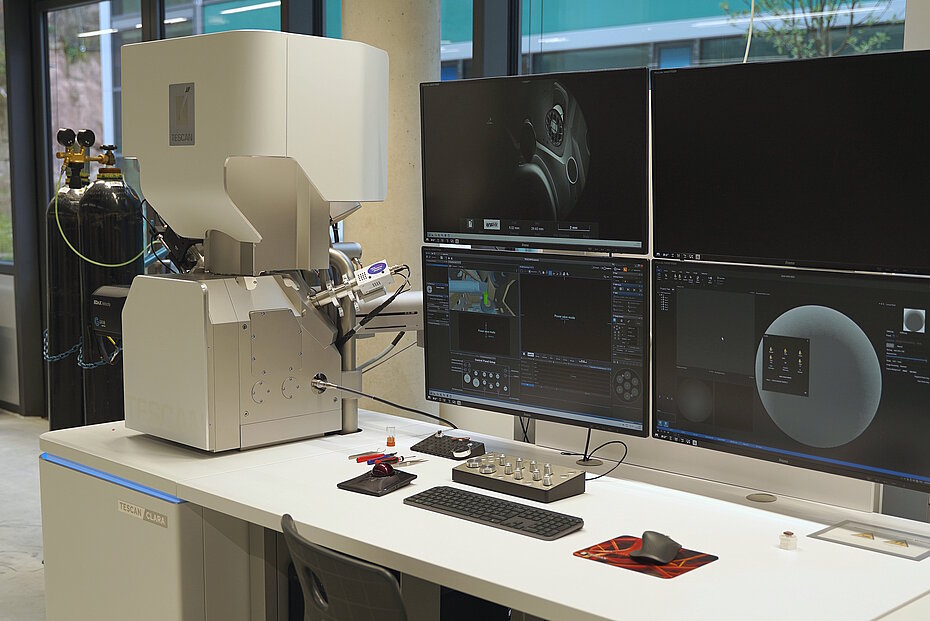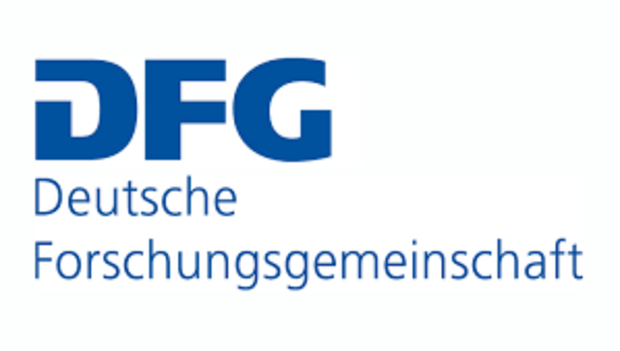
Characterisation of materials and structures by means of scanning electron microscopy and EDX, EBSD and STEM analysis
Within the scope of a large-scale equipment application funded by the German Research Foundation (DFG), a high-resolution Clara scanning electron microscope from Tescan was purchased, featuring energy dispersive X-ray spectroscopy (EDX), electron backscatter diffraction (EBSD) and scanning transmission electron microscopy (STEM). The system allows very high magnifications even at low acceleration voltages and operation in low vacuum. This enables a wide variety of material classes to be examined with high precision, from metallic materials such as steels and electrochemically deposited alloys, to polymers and composites, to synthetic nanomaterials and biological cells.
The device can be used in various research areas at the University of Applied Sciences Kaiserslautern. In materials engineering and mechanical engineering, the focus is on the analysis of microstructures, damage mechanisms and process chains in order to model and calculate the fatigue life of steels, for example. In civil engineering, the SEM enables the examination of building materials and recycled materials. In the field of microsystems and nanotechnology, nanocrystalline, electrochemically deposited materials for magnetic applications are characterised with the aim of opening up new fields of application for this technology. In addition, synthetically produced nanomaterials are examined in the life sciences and biosensor technology, with a focus on their functionalisation through chemical modification and their interaction with biological molecules and cells.
The SEM thus forms a central research infrastructure that enables interdisciplinary questions to be addressed and creates interdisciplinary interfaces between mechanical engineering, civil engineering, electrical engineering, materials science and life sciences. Particularly noteworthy is the potential to exploit synergies between the disciplines, for example by combining materials science and biological approaches for new sensor concepts.
Contact

Wissenschaftliche Mitarbeiterin
- +49 631 3724-2015janina.koziol(at)hs-kl(dot)de
- Campus Kaiserslautern
- Room H1-2.010.2

Vizepräsident für Forschung und Transfer, Studiengangsleitung "Maschinenbau, Bachelor", Fachbereichsrat AING
- +49 631 3724-2389peter.starke(at)hs-kl(dot)de
- Campus Kaiserslautern
- Room H1-2010.1

As there was no comparable system available at the university until now, this will significantly increase the potential of professors active in research. For this reason, and to ensure sustainable use, the university management, the departments involved and the research centres are supporting the project beyond the proposed project duration in terms of implementation and by providing funds for follow-up and personnel costs. Specifically, one position for a research assistant and one for an assistant research assistant will be financed by the DFG and the University of Applied Sciences.